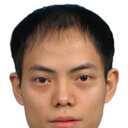Purinergic 2Y1 receptor stimulation decreases cerebral edema and reactive gliosis in a traumatic brain injury model.
Klíčová slova
Abstraktní
Traumatic brain injury (TBI) is the leading cause of death and disability in children and young adults. Neuroprotective agents that may promote repair or counteract damage after injury do not currently exist. We recently reported that stimulation of the purinergic receptor subtype P2Y(1)R using 2-methylthioladenosine 5' diphosphate (2MeSADP) significantly reduced cytotoxic edema induced by photothrombosis. Here, we tested whether P2Y(1)R stimulation was neuroprotective after TBI. A controlled closed head injury model was established for mice using a pneumatic impact device. Brains were harvested at 1, 3, or 7 days post-injury and assayed for morphological changes by immunocytochemistry, Western blot analysis, and wet/dry weight. Cerebral edema and expression of both aquaporin type 4 and glial fibrillary acidic protein were increased at all time points examined. Immunocytochemical measurements in both cortical and hippocampal slices also revealed significant neuronal swelling and reactive gliosis. Treatment of mice with 2MeSADP (100 μM) or MRS2365 (100 μM) 30 min after trauma significantly reduced all post-injury symptoms of TBI including edema, neuronal swelling, reactive gliosis, and AQ4 expression. The neuroprotective effect was lost in IP(3)R2-/- mice treated with 2MeSADP. Immunocytochemical labeling of brain slices confirmed that P2Y(1)R expression was defined to cortical and hippocampal astrocytes, but not neurons. Taken together, the data show that stimulation of astrocytic P2Y(1)Rs significantly reduces brain injury after acute trauma and is mediated by the IP(3)-signaling pathway. We suggest that enhancing astrocyte mitochondrial metabolism offers a promising neuroprotective strategy for a broad range of brain injuries.


